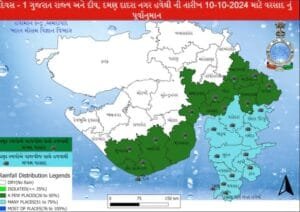Check land record online : किसी भी जमीन का पुराना रिकॉर्ड ऑनलाइन यहा से निकाले
1. Gujarat: AnyROR (Any Records of Rights)
Gujarat sarkar ne AnyROR portal launch kiya hai, jisse aap apne zameen ke records online dekh sakte hain. Yeh website aapko 7/12 utara, 8A record, aur zameen ke ownership se judi saari details easily provide karti hai.
- Website: AnyROR Gujarat
- Key Features:
- Zameen ke records jaise 7/12 aur 8A ko online check kar sakte hain.
- Zameen ka naksha (map) bhi download karne ka option hai.
- Land transaction history bhi check ki ja sakti hai.
How to the Check AnyRoR Online
First of attend office functionary point of AnyRoR orattendanyror.gujarat.gov.inAfter that click on the button ViewlandRecord.Now handpick any of the choices as peryourrequirement.Then enter your land details like District, Talukas, village, check number/Khatanumber.After that enter verification law and click on on the get details button Now you'll check Any RoR quarter from following
Types of the Land Records in Gujarat AnyRoR
- VF7 Village Form 7 is understood as7/ 12 orsatbarautara.You can pierce your land details, power details of specific land, boja and other rights details from VF7 form.
- VF 8A village Form 8A provides Khata information. From this type you'll be pierce Khata Number and Owner Information.
- VF6 Village Form 6 is register which maintain by Talati or Village Accountant to integrate day to day changes inthe land record. By using this you'll check any changes in entry information.
- 135 D 135 D may be the Notice to Mutation. formerly you apply for Mutation, Talati prepare Notice 135D. This notice is served to Khatedars concerned applicable parties and the other interested parties for any exceptions.
- Enter Verification Code( Captcha) and click “ Get Detail ” button to induce asked report.
- You can check Any RoR of following sectionsonwww.anyror.gujarat.gov.in.
- Ahmedabad, Amreli, Anand, Aravalli, Banaskantha, Bharuch, Bhavnagar, Botad, Chhota Udaipur.
- Dahod, Dang, Devbhoomi Dwarka, Gandhinagar, Gir Somnath, Jamnagar, Junagadh, Kutch, Kheda.
- Mahisagar, Mehsana, Morbi, Narmada, Navsari, Panchmahal, Patan, Porbandar, Rajkot.
- Sabarkantha, Surat, Surendranagar, Tapi, Vadodara and Valsad quarter.

How to get pukka motorized dupe of Gujarat Land Records?
Still, 8A or 6 entry follow the given way also
- If you want motorized pukka dupe of7/ 12Utara.You should visit neareste- Dhara Kendra. You can finde- Dhara Knedra at original Taluka Mamlatdar office.
- At originale- Dhara Kendra you can request for RoR print. Please note that you shold be have Survey Number, Khata Number, Farm Name or Khatedar Name with you while the requesting RoR print.
- Operator will confirm records details first also will publish7/ 12 or 8A from the computer.
- e-Dhara Dy Mamlatdar or any nominated labor force signs and prints requested motorized RoR, which is handed over to you.
Important link
hand of applicant for entering motorized demanded RoR is taken in RoR allocation register.
Kaise Use Karein:
- AnyROR Gujarat website par jayein.
- Aapko “View Land Record” section ko select karna hoga.
- District, taluka, aur survey number dal kar records ko access karein.
2. West Bengal: Banglarbhumi
West Bengal ke land records ko access karne ke liye Banglarbhumi ek important portal hai. Iske zariye aap apni zameen ke mutation status, ROR (Records of Rights), aur land map ko access kar sakte hain.
- Website: Banglarbhumi
- Key Features:
- Mutation status aur ROR records ko check karne ka feature.
- Zameen ke naksha ko bhi download kar sakte hain.
- Kheshra aur Khatian number ke zariye ownership details dekh sakte hain.
Kaise Use Karein:
- Banglarbhumi website par login karein.
- “Know Your Property” section ko click karein aur apna district aur block select karein.
- Apna kheshra ya Khatian number enter karke details ko dekh sakte hain.
A Comprehensive Guide to Checking Land Records in India
In India, land records serve as crucial documents that validate land ownership and rights. With the digitization of land records in many states, checking these records has become easier and more accessible. This blog post will guide you through the process of checking land records in India, the importance of these records, the various types of land records available, and the steps involved in obtaining them.
Importance of Land Records
Land records are essential for several reasons:
- Ownership Verification: They provide proof of ownership and help settle disputes regarding land.
- Property Transactions: Essential for buying, selling, or leasing land, ensuring that all parties are aware of the ownership status.
- Government Schemes: Many welfare schemes require verified land records to provide benefits.
- Financial Assistance: Banks and financial institutions often require land records for loan applications.
- Land Use Planning: Helps the government in planning and implementing policies related to land use and urban development.
Types of Land Records in India
- Khasra (Land Record): A detailed document that contains information about the land's area, boundaries, and ownership.
- Khatauni: A record that reflects the ownership of land over a specific period, usually updated annually.
- Jamabandi: The record of rights, which includes details about the ownership, area, and classification of the land.
- Patta: A legal document that acts as proof of land ownership, issued by the government.
- Record of Rights (RoR): A comprehensive document that includes details about the ownership, tenancy, and other rights over the land.
How to Check Land Records in India
With many states in India digitizing their land records, you can now check them online. Here’s a step-by-step guide to checking land records in India:
Step 1: Identify Your State
Land records are maintained at the state level, so the first step is to identify your state. Each state has its own website or portal for accessing land records.
Step 2: Visit the State Land Record Portal
Most states have an official website dedicated to land records. Here are some examples:
- Maharashtra: Maharashtra Land Records
- Karnataka: Bhoomi
- Punjab: Punjab Land Records
- Uttar Pradesh: UP Bhulekh
Step 3: Choose the Appropriate Option
Once you’re on the state’s land records portal, you will usually find multiple options to check land records. These options may include:
- Khasra/Khatauni Search: For checking details about specific plots of land.
- Jamabandi: For viewing the record of rights.
- Patta Search: For verifying ownership.
Step 4: Enter Required Details
To access the land records, you will need to enter specific details. This may include:
- District: The district where the land is located.
- Tehsil: The sub-district.
- Village: The specific village or locality.
- Khasra Number: The unique number assigned to the plot of land (if applicable).
- Account Number: The number associated with the landowner’s account.
Step 5: View and Download the Records
After entering the required details, you can view the land records. Most portals allow you to download a copy of the records in PDF format for your reference. Make sure to save these documents securely.
Step 6: Cross-Verify Information
It’s always a good practice to cross-verify the information obtained online with the local land revenue office. This is especially important for significant transactions like buying or selling land.
Checking Land Records via Mobile Apps
In addition to web portals, many states have developed mobile applications for easier access to land records. These apps typically offer similar functionalities as the websites and can be a convenient option for users on the go.
Examples of Mobile Apps
- Land Records App (Maharashtra): Provides access to land records, ownership details, and other services.
- Bhoomi App (Karnataka): Offers land-related services, including checking land records and applying for land conversions.
- Punjab Land Records App: Facilitates easy access to land records and related information.
Common Issues and Solutions
While accessing land records online is generally straightforward, you may encounter some challenges:
1. Incorrect Information
Sometimes, the details displayed may not match the actual records. In such cases, contact the local land revenue office for rectification.
2. Technical Glitches
Website or portal downtime can occur. If you face technical issues, try accessing the site during off-peak hours or check back later.
3. Lack of Digital Records
In some rural areas, not all land records may be digitized. In such cases, you’ll need to visit the local revenue office for assistance.
Legal Implications of Land Records
Understanding land records is crucial not just for ownership verification but also for legal reasons:
- Dispute Resolution: Accurate land records help in settling disputes over land ownership and boundaries.
- Court Evidence: In legal cases related to land, these records serve as important evidence.
- Regulatory Compliance: Ensuring that your land records are accurate helps in complying with government regulations and policies.
Conclusion
Checking land records in India is an essential process for anyone involved in property transactions, whether for personal or professional reasons. With the digitalization of land records, accessing this information has become easier and more convenient than ever before. By following the steps outlined in this guide, you can ensure that you have accurate and up-to-date information about land ownership and rights.
As land records play a vital role in property transactions and legal matters, it’s important to approach them with diligence and care. Always ensure to verify information from official sources and consult legal experts when necessary. With the right knowledge and tools, navigating the complexities of land records in India can be a straightforward process.





.jpeg)















